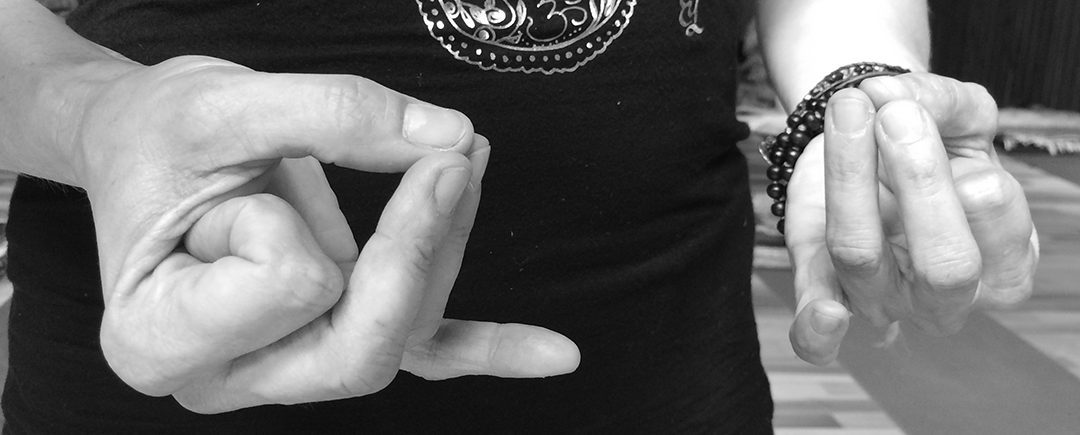Hand Mudras by Laura Tyree of Dragonfly Yoga Studio in Fort Walton Beach
The definition of mudra carries many meanings. A seal. A gesture. A symbol. A position of the hand or hands. Dristis (eye positions), asana (body postures) and even Pranayama (breathing rhythms) are also called mudras. Each of these lead to higher states or consciousness, and affect not only the mind and spirit connection, but the body as well. These positions and gestures engage the soul (and the brain) and stimulate an influence on them. Hand mudras in conjunction with asana intensify the healing effects of both. This information will focus chiefly on the hand positions, but the dristis, asana, and Pranayama also carry their positive effects.
The origin of the hand mudras is not known; however, evidence has been found throughout the entire world. Asia and European history carries a variety of hand and arm gestures. Today the gesture of the hand shake, itself, seals an agreement. In India mudras are a chief part of all religious activities. Each deity holds certain characteristics of strength and can be found in paintings and statues holding corresponding hand positions to further signify their gifts and blessings.
Enjoy this video with Laura explaining the fundamentals of the Mudra practice:
